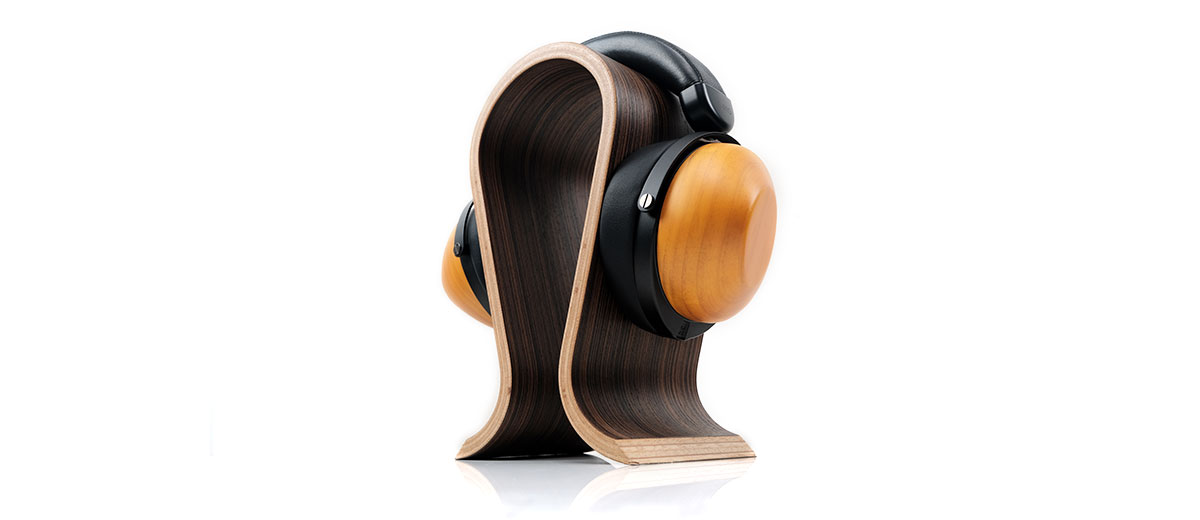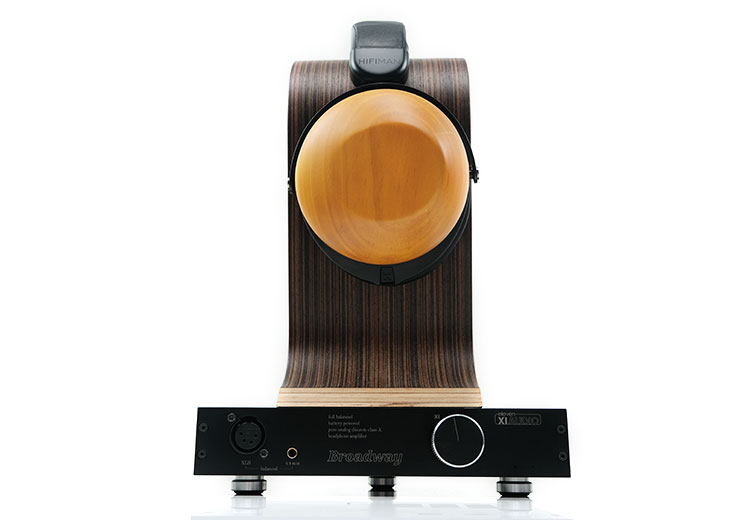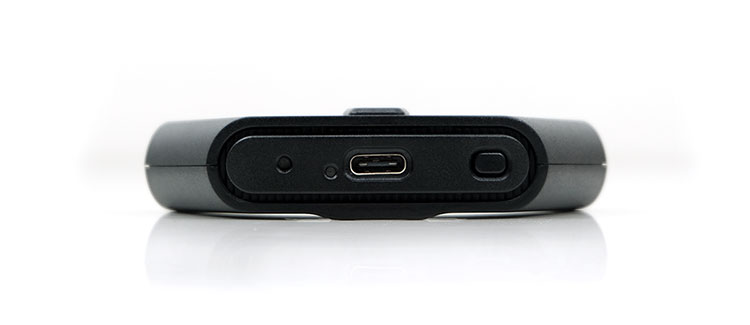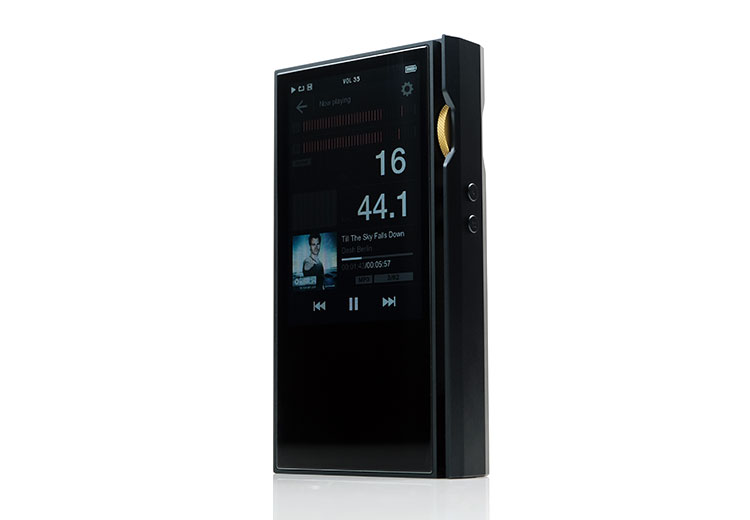Sound Impressions
Summary
The HE-R10D has a lively tonal character with a fairly punchy low-end and a forward treble presence though overall this is not a V-shaped presentation. It has enough bumps and valleys through the FR to give it something a lot more unique to my ear, particularly in the mids. This is a performance varied enough to do away those standard shape definitions out the window.
The tonal quality will ultimately depend on your matching and here I suggest you go with something that offers a good dynamic range as portable sources tended to give it a politer low-end whereas amplifiers with good power delivered something far more dynamic and engaging.
FR Response
The HE-R10D has a degree of warmth and fullness on the low-end with a gentle but prolonged mid-bass bump from 50-200Hz and another stronger one through the lower mids from 500HZ to around 1k.
The sub-bass elevation is not huge below 50Hz. In fact, I would say slightly rolled off so it does not have the same density as the HE-R10P. The resulting response is still fairly beefy so if you are coming from something like the AKG K872 you are going to get a considerable increase in bass presence.
Lower-mids are forward and full-sounding picking up some of that bass warmth in the process with a fairly pointed 500Hz-1k rise. It is not the peak point in the FR though, not by a long shot, but enough of a bump to bring instruments forward and for male voicing to sound natural and smooth.
Beyond that, you get a few dips at 1-2k and 3-4k with gradual bursts in-between at 3k and its highest elevation at 5-6k. Here, the HE-R10D can become a bit more diffuse and ‘ethereal’ in its presentation and not as physical in note weight compared to the lower-mids and bass response.
However, I do find that higher-pitched vocals are not at a loss for clarity, and how authoritative they sound ultimately depends on where they pitch on the FR.
Soprano or head voices do better, especially if they have space to breathe such as those Spartan-like modern R’n’B mixes. Voicing around that 3k marker with accompanying percussion sitting in the 5-6k pocket can sound forward and clear.
Beyond 6k, the HE-R10D has a fair amount of fade to 10k with a relatively minor 10-12k bump for headroom so the listening focus tends to drop to that 5-6k peak and a stronger upper-mids presence.
Timbre
The HE-R10D has a mix of different colorations in its timbre depending on where you focus on the FR. Low-end instruments 1k and below have more warmth and body though with a slightly soft attack and longer decay.
The fundamentals in lower register instruments are very good with just enough heft to give bass synth notes and kick drums a pleasing sense of authority. The slight drop in sub-bass presence does mean though the low-end tonal character has more of a strong punchy response than a denser guttural feeling.
The mids timbre can be split into two parts with the elevated lower mids pulling a bit more from the bass warmth and offering a very smooth tonal character and the upper mids a more ethereal lighter coloration with less body and overall a cleaner sound.
That is not to say that the HE-R10D is overly bright up top, as the presence is still more to the relaxed side for me but definitely that 5-6k bump will pick up some energy and focus on the upper mids when pushed.
Vocal timbre will largely depend on the pitching. Male chest and mixed voice will sound smooth with neutral weight whereas higher-pitched female or head vocals will be lighter in tone with a little more natural sibilance creeping in.
Source matching will determine the level of sibilance so brighter amps will amplify it whereas smoother R2R sources and tube amps dampen down quite nicely.
Staging
The HE-R10D soundstage is impressive for a closed-back headphone but overall, the imaging or instrumental placement can sound a little relaxed and grandiose with that diffuse midrange and airy treble presentation.
The overall feeling is of a large stage but one that is placed a few meters back from, kind of like a middle row placement in a live concert. The 2-3k bump and 5-6k peak will likely sound the most dynamic in the HE-R10D presentation followed by that mid-bass punch when called upon.
Vocal positioning will vary with higher pitching vocals sounding further forward than mixed or chest male vocal performance with the same also for percussion passages.
I have to emphasize that the HE-R10D can scale in terms of staging with better sources and amplification. With most portable sources with slightly less power, I found the staging to be ok for a closed-back design but perhaps slightly polite on the low-end with less discernable mids instrumental separation compared to more dynamic desktop setups.
Once I started mixing and matching with lively clean DAC’s such as the Chord Qutest and with more power from amps such as the Auris Audio HA-2SF, the dynamic range of the HE-R10D improved considerably. That means a punchier more physical sounding low-end, a blacker background with enhanced instrumental separation, and better top-end headroom.
Wireless Performance
Pairing
Give this is the same module that comes with the HE-R10P I was honestly not expecting any difference in the technical performance of the HE-R10D once you go wireless.
That means multi-point capability which is an excellent feature if you want to switch from PC to smartphone since you can connect to two sources at the same time. My only caveat on this is my Windows 10 laptop is required to be connected first before the smartphone to allow for multipoint. Otherwise, the laptop wouldn’t connect if there is an existing connection beforehand.
Also, I suggest setting up direct audio for your Windows events and using media software with the output driver set to the BlueMini II, (for example, Foobar 200o), to prevent constant interruption.
Aside from that, the Bluemini II pairs quickly and easily with all our devices tested both portable, desktop including the laptop.
Stability & Range
The stability and range, (using LDAC), are going to vary based on your source device. On the strongest side of the scale, it is going to be your smartphone. These tend to have the best wireless module implementation and true enough both my older Huawei P20 and newer Asus Rog Phone 3 both gave me a solid 7-10m before breaking up, depending on the obstacles in my way.
The laptop, (Acer Nitro 5), did less well as about 5-7 meters with the iBasso DX300 the weakest of the 4 sources tested at 3-4 meters before any signal interruption. If all four are in the source ‘line of sight’ and closer than 2-3 meters then all perform perfectly fine.
Latency
I did mention in the HE-R10P review that there was no noticeable lag from Bluemini II aptX Classic pairing on Windows 10 but I am revising that now with a 0.2s lag for Netflix and some local media files.
You can get away with it without sync and it is better than your average TWS but it does become a bit tighter with that small tweak in most instances.
Sound Quality
LDAC
No question an LDAC transmission from your source will get you the best possible sound quality. Dropping down to SBC is like sucking the meat off the bones and pushing the stage back a few feet and lowering the ceiling with it.
The most dramatic difference is the weight on the low-end. You can still detect the extension on the HE-R10D but the power is gone and the dynamic range sounds significantly flatter.
Going LDAC also fleshes out the treble with note textural detail improving as well as bringing in some welcome additional headroom. Depth and height become a lot more palatable though still not on the same level as going wired from a top-class DAC/amp.
Wired Versus Wireless
Going wired versus wireless comes down to acceptable levels of dynamic range and just how much ‘information’ you hear in the performance.
The HE-R10D timbre will not radically change from wired to wireless unless you pick a very colored DAP or amplifier. Rather, it’s the level of compressions and those tiny nuanced spatial cues or the amount of resolution in note texture that is the key difference.
For example, using an LP P6 Pro balanced to a Cayin C9 portable amplifier (Class AB, solid-state timbre setting), and the sound is punchy, vibrant, and more holographic sounding. The note texture is richer and more detailed sounding than going LDAC from a smartphone.
The LDAC transmission is still excellent but sounds slightly one-dimensional by comparison. That being said, the HE-R10D Bluemini II performance is more forgiving than the HE-R10P alternative and personally, I would be quite happy with the HE-R10D LDAC wireless presentation for casual listening.
Synergy
The HE-R10D is rated at 32Ω and 103DB SPL which on paper seems easy enough to drive from most decently powered sources and desktop amplifier.
However, going back and forth between suitable DAPs, one excellent portable amp, and a few high-end desktop amplifiers and I have to say the HE-R10D can scale.
Portable Pairings
Those relatively efficient numbers will give you comfort working from a modern DAP with over 500mW of power, especially if you can covert that XLR into a 4.4mm plug. Delta-Sigma sources like the iBasso DX300, FiiO M15, and the HiBy R8 have no issues driving the HE-R10P and it does sound expansive and quite detailed.
I did though prefer DAPs such as the LP P6 Pro going balanced as well as the DX300 over the R8 and the M15. The more analog and weightier sound of the former sounded better than the latter.
Now the R8 is a mix of weight, warmth, and slight brittleness on the top-end whereas the M15 has the better treble body but slightly brighter. Both of these teased out a lot more sibilance and sharpness from the vocal presence region of the HE-R10D leaving it to sound a bit too thin in the upper mids for my liking.
The DX300 and the LP P6 Pro did a lot better in that regard with both offering a smoother vocal delivery and a more natural upper mids timbre. The P6 Pro, in particular, delivered the most lifelike midrange and treble performance from the HE-R10D with the better body and a slightly liquid-sounding attack that never grated.
Desktop Pairings
You may notice I did not mention bass in the portable pairings and this is where the desktop matches sounded a lot superior with the HE-R10D. Portable sources bass performances tended to sound comparatively polite whereas more powerful desktop setups offered a superior level of dynamic range to go along with that power.
The HE-R10D, like any good dynamic driver, can scale and respond better with that additional resolving power and you will feel that the most on the low-end.
For example, the Auris Audio HA-2SF/HE-R10P pairing in combination with the very punchy Chord Qutest DAC offered a much tighter and more powerful low-end performance with a slightly rounded but weighty instrumental timbre.
This combo just had a little less upper-mids presence than the other desktop amps we used but that might actually suit a lot of potential owners who like their treble a bit on the relaxed side.
If you wanted something a bit cooler, and cleaner but again with fantastic depth and definition out of that 50mm driver then the Bakoon current mode HPA-01 amplifier, (source DX300), was also a great fit. I found this to be deep, spacious, and very resolving when combined with the line-out of the DX300.
Our portable amplifier was the Cayin C9 which is halfway to a desktop replacement given its potential 2W output balanced mode. And, that is exactly how we matched it up with the HE-R10D complete with a balanced line out to the P6 Pro.
The Class AB/Solid-state combo will deliver the punchiest performance but if you want the smoother upper-mids and treble tone I suggest going with the Class A/Tube or Class AB/Tube timbre.





